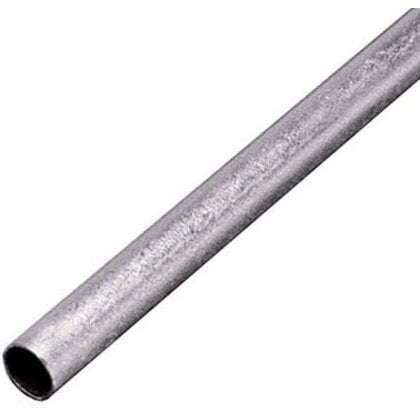Electrical Metallic Tubing (EMT) is a popular choice for protecting and routing electrical wires in various applications. It comes in different sizes to accommodate diverse electrical projects. Understanding the common EMT pipe sizes and their corresponding conduit fill capacities is crucial for proper wire installation and compliance with electrical codes. In this blog, we will explore the most common EMT pipe sizes and their respective conduit fill capacities to help you make informed decisions for your electrical installations.
What is EMT Conduit?
Before diving into the different sizes and fill capacities, let’s briefly review what EMT conduit is. EMT conduit is a lightweight, thin-walled tubing made of steel or aluminum. It provides excellent protection for electrical wires and is easy to bend and install. EMT conduit is widely used in residential, commercial, and industrial electrical systems.
Common EMT Pipe Sizes
EMT conduit comes in various sizes, each designed to accommodate specific wire quantities and electrical loads. The most common EMT pipe sizes include:
1/2 inch EMT: This is the smallest and most commonly used EMT size for residential wiring and light fixtures.
3/4 inch EMT: Suitable for larger residential and commercial applications, this size can handle more significant electrical loads.
1 inch EMT: Commonly used in industrial settings and for heavier electrical loads.
1 1/4 inch EMT: Used for more substantial electrical installations and where more wire capacity is needed.
1 1/2 inch EMT: Suitable for larger commercial and industrial applications.
2 inch EMT: Used in industrial electrical systems and where a high conduit fill capacity is required.
Conduit Fill Capacity
Conduit fill capacity refers to the maximum number and size of wires that can be safely and adequately installed within a specific EMT conduit size. Proper conduit fill is essential to prevent overheating, reduce the risk of cable damage, and maintain the efficiency of the electrical system.
Factors Affecting Conduit Fill
Several factors affect the conduit fill capacity, including the size and number of conductors, the type of insulation, and the ambient temperature. Compliance with the National Electrical Code (NEC) guidelines is crucial to ensure safe and efficient wire installations.
Conduit Fill Calculations
Calculating the conduit fill capacity involves considering the cross-sectional area of each wire, the inside diameter of the conduit, and the required percentage of conduit fill based on NEC guidelines. Various online calculators and tables are available to simplify the process and ensure accurate results.
Compliance with Electrical Codes
To ensure the safety and legality of your electrical installations, it’s essential to comply with the NEC regulations regarding conduit fill capacities. Adhering to these guidelines helps prevent voltage drop, overheating, and other electrical hazards.
Professional Guidance
For complex electrical installations or projects involving a large number of wires, it’s recommended to seek professional assistance from licensed electricians or electrical engineers. They have the expertise to perform accurate conduit fill calculations and ensure code compliance.
Conclusion
Understanding the common EMT pipe sizes and their corresponding conduit fill capacities is essential for successful electrical installations. Proper conduit fill ensures efficient wire routing, minimizes electrical hazards, and adheres to safety standards outlined in the NEC guidelines. By selecting the appropriate EMT size and accurately calculating the conduit fill, you can confidently undertake electrical projects with the knowledge that your installations are safe, efficient, and compliant with electrical codes.

